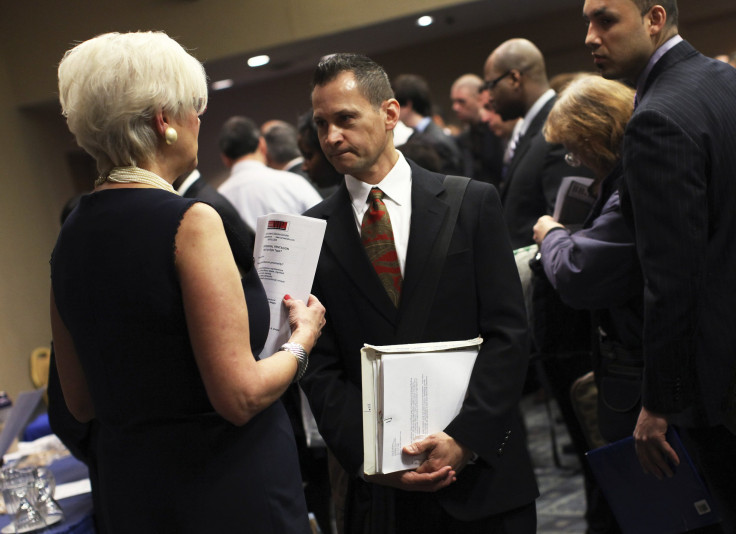US Employers Created A Mere 88,000 Non-farm Payroll Jobs In March, Far Fewer Than Expected, On Weakness In Manufacturing And Retail, According To The Bureau Of Labor Statistics

U.S. employers created an anemic number of new jobs in March -- 88,000 -- the weakest job gain in nine months and less than half of what economists had expected as evidence mounts that the nation’s positive economic momentum is slowing.
The Bureau of Labor Statistics’ estimate, which is subject to revisions as more data comes in, attributed the disappointing report to a decline in both manufacturing and retail employment.
The nation’s unemployment rate fell to 7.6 percent from 7.7 percent, but only because 496,000 Americans stopped looking for work. Economists polled by Reuters had expected about 200,000 new payroll jobs in March and that the unemployment rate would hold at 7.7 percent, a four-year low. Total unemployment remains at about 3 million fewer jobs than at the pre-recession peak.
By contrast, employers added 236,000 jobs in February while monthly job creation has averaged 205,000 from November 2012 through February 2013.
More ominous, the participation rate fell to a 40-year low of 63.3 percent last month, from 63.5 percent the month before.
There were two positive data points: jobs gains for February were revised upward to 268,000 from an initial 236,000, and in January to 149,000 from an initial 119,000.
“Given the size of the revisions upward in January, it would be as much of a mistake to overreact to this number on the downside as it would have been to overreact to the February number on the upside," said Steven Blitz, chief economist at ITG.
“The truth lies some place in the middle, and the middle -- let’s call it 175,000 private sector jobs per month -- is enough to sustain growth, though not enough to drive down unemployment the old fashioned way, with people finding work and the labor force growing.”
Nevertheless, the weak headline numbers drew a quick response from the markets. The S&P 500 tumbled 1.25 percent to 1,540.49, the Dow Jones Industrial Average fell 1.13 percent to 14,441.30, and the Nasdaq 100 plunged 1.55 percent to 3,174.86. Gold rose 0.78 percent or $12.10 to $1,564.50. The euro fell against the greenback by 0.5 percent to a fraction less than $1.30.
Analysts attributed the surprisingly bad March job creation total to Washington’s payroll tax hike implemented in January and, to a lesser extent, across-the-board sequester budget cuts.
The March jobs report is expected to stiffen the U.S. central bank’s resolve to keep up the $85 billion per month money printing it has engaged in since last fall to boost the economy.
“With the nonfarm payrolls coming in well below expectations, the market is assured that the Federal Reserve will not be taking its foot off the quantitative easing gas pedal anytime soon,” said Douglas Borthwick of Chapdelaine Foreign Exchange.
“Bad economic numbers in the U.S. will be met by Federal Reserve resolve, ensuring U.S. dollar weakness going forward, against all currencies except Japan, where the Bank of Japan has entered the quantitative easing party late, but with a much larger bazooka.”
Combined with other weak economic reports this week and numerous downward revisions of first-quarter earnings estimates -- Reuters estimated S&P 500 first-quarter earnings are now up a mere 1.6 percent from the year-earlier level -- and the March data signals a sharp drop in economic momentum seen at the end of the first quarter.
Earlier this week private payroll processor ADP said companies hired only 158,000 new employees in March, the smallest gain since October 2012, well below the consensus estimate of 197,000. March hiring also saw a sharp drop from February’s upwardly revised 236,000, ADP said on Wednesday.
The Institute for Supply Management also issued a downbeat report earlier this week on the health of the services sector, which dominates the economy. ISM said employment fell to 53.2 percent from 57.2 percent, the lowest level since November.
ISM's barometer of manufacturing activity in March dipped as well. Analysts polled by Reuters see employment in the sector rising by 10,000 in March, compared with 14,000 in the prior month.
Before the March jobs report came out, futures on the S&P 500, which fell 0.6 percent this week and were on track for its worst week of the year, slid. The S&P 500 had fallen 8.3 points and was below fair value, a figure that gauges share prices by assessing account interest rates, dividends and time to expiration on the contract. The Nasdaq 100 futures had declined 17 points and the Dow Jones Industrial Average futures had been off 73 points.
© Copyright IBTimes 2024. All rights reserved.





















